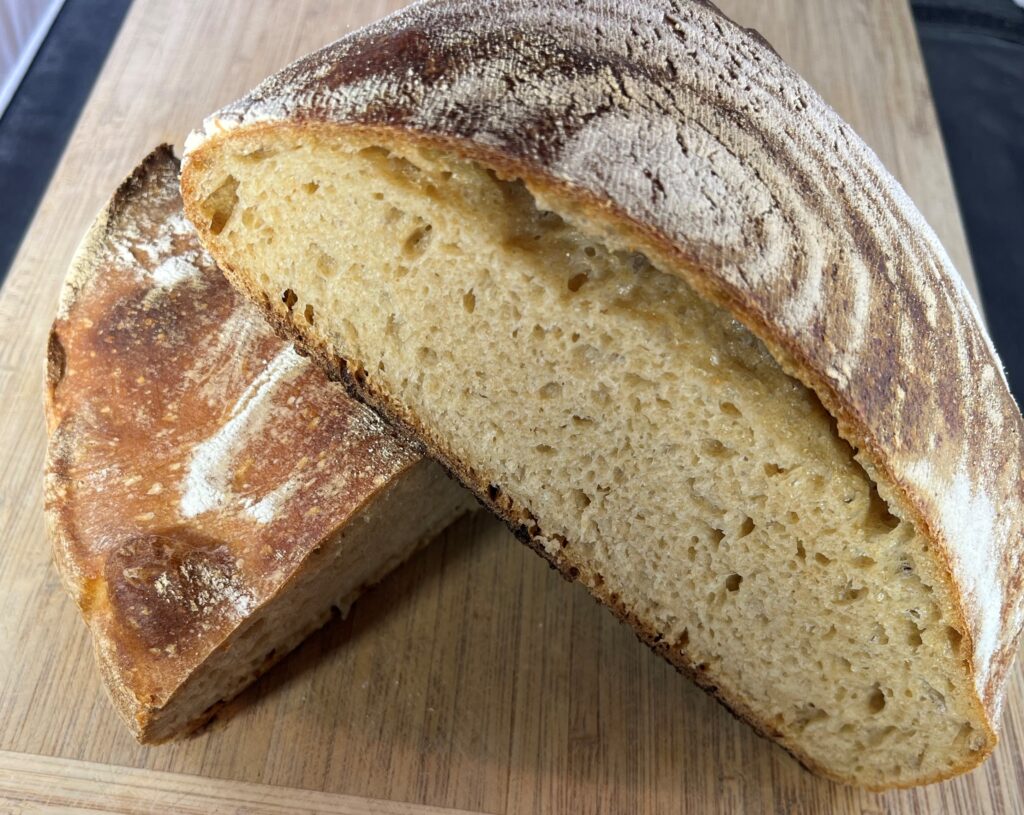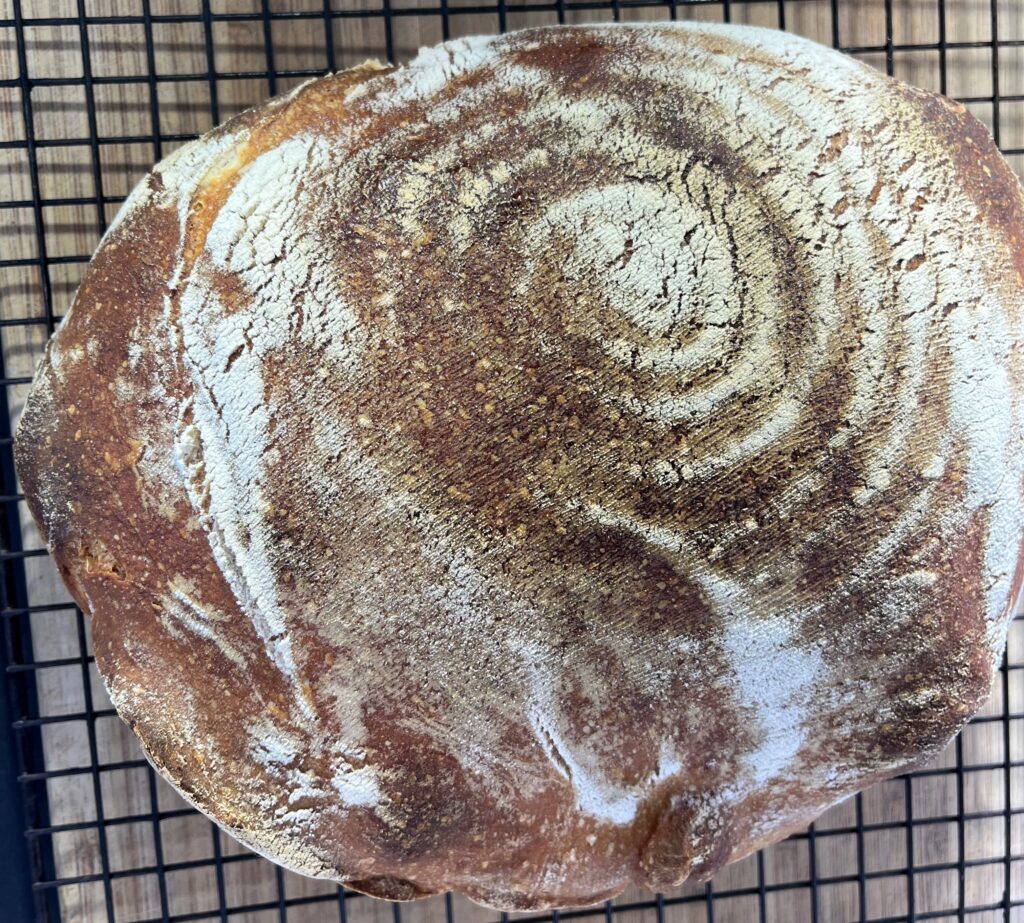
This is my first time making a bread using only my sourdough starter. It worked well and tasted great, although it does take a total of around 3 days from start to finish. This recipe is adapted from Ken Forish’s book Evolutions in Bread: Artisan Pan Breads and Dutch-Oven Loaves at Home. It combines the no-knead bread technique popularized by Jim Lahey with Ken Forkish’s techniques for working with Einkorn and other primitive wheats.
The basic process is to build up a quantity of active starter, mix the dough with a long final rise in the refrigerator, and then bake the dough in a Dutch oven, first with the lid on (to create a moist environment for good expansion and a crispy crust, and then with the lid off (to dry and brown the crust).
I proofed the dough in a banneton (reed basket) with a cloth liner which I recently bought from King Arthur Flour. As I had hoped, the liner made it much easier to transfer the proofed dough to the Dutch oven.
Initial Levain (Morning day 1)
50-60 g. (50/50 by weight) sourdough starter
100 g. bread flour
100 g. warmish water
First Feeding (Evening day 1)
Initial Levain
100 g. bread flour
100 g. warmish water
Second Feeding (Morning day 2)
50-60 g. from first feeding
100 g. bread flour
100 g. warmish water
Final dough (Make Evening day 2 – Bake Morning day 3)
200 g. starter
150 g. bread flour
250 g. einkorn (or emmer) flour
310 g. warmish water
11 g. fine sea salt
The morning of the first day mix together the sourdough starter, bread flour and water. Cover and allow to sit on the counter.
The evening of the first day (8-12 hours after the initial mixing) add the additional bread flour and water to the levain. Mix well, cover and allow to sit on the counter.
The morning of the second day, take 50-60 g. of the refreshed starter and mix it with the bread flour and water. Cover and allow to sit on the counter. Discard the rest of the of the starter from the first feeding.
The evening of the second day (7-8 hours later) put 200 g. of the starter into a 6-quart doubling container along with the 310 g. of water. Mix with a dough whisk to dissolve the starter. Add the bread and einkorn flours and mix with a dough whisk until well incorporated. Sprinkle the sea salt on top of the dough and allow to rest for 20-30 minutes covered.
After it rests, wet your hand. Grab some dough from the bottom of the tub and stretch and fold it over the top of the dough. Repeat a couple more times. Then make several pincer cuts in the dough and stretch and fold the dough over itself. Repeat cutting and folding the dough until the ingredients are well mixed. Let it rest for about 2 minutes and then repeat the process. Within about 5 minutes, the dough should be mixed. Cover and let it rest for 10 minutes.
After the 10-minute rest, with a wet hand, grab some dough from the bottom, stretch it and fold it over the top of the dough. Do this a few times and then recover the dough for another rest.
After the dough has spread over the bottom of the tub (at least 20 minutes after the first fold), again stretch and fold the dough a few times using a wet hand. Allow to rest until the dough has again spread over the bottom of the tub (at least 20 minutes after the second fold), again stretch and fold the dough a few times using a wet hand. There are 3 folds in total.
Cover and allow to the dough to ferment until it has expanded to about ½ inch below the 2-quart mark on the tub. This will likely take about 4-5 hours depending on the temperature in the kitchen.
After the dough has proofed, flour a work surface and a banneton with a cloth liner. Ease the dough out of the doubling container and with floured hands form it into a ball. Put it in the banneton seam side up and put the entire container in a clean plastic bag, such as a supermarket produce bag. Tie the bag closed and put the banneton and bag into the refrigerator for an overnight rise.
The next morning, put a heavy oven-proof pot and lid (~5 quart in size) separately into the oven and heat to 450 degrees. After about 30 minutes when everything is preheated, carefully remove the pot from the oven and turn the banneton upside down over the empty pot. After the dough falls into the pot, put the lid on and bake for 30 minutes. Remove the lid and bake for another 15-20 minutes until the crust is nicely browned but not burned. Remove the pot from the oven and with a spatula, remove the bread from the pot and allow to cool on a wire rack for at least 30 minutes before cutting it.


